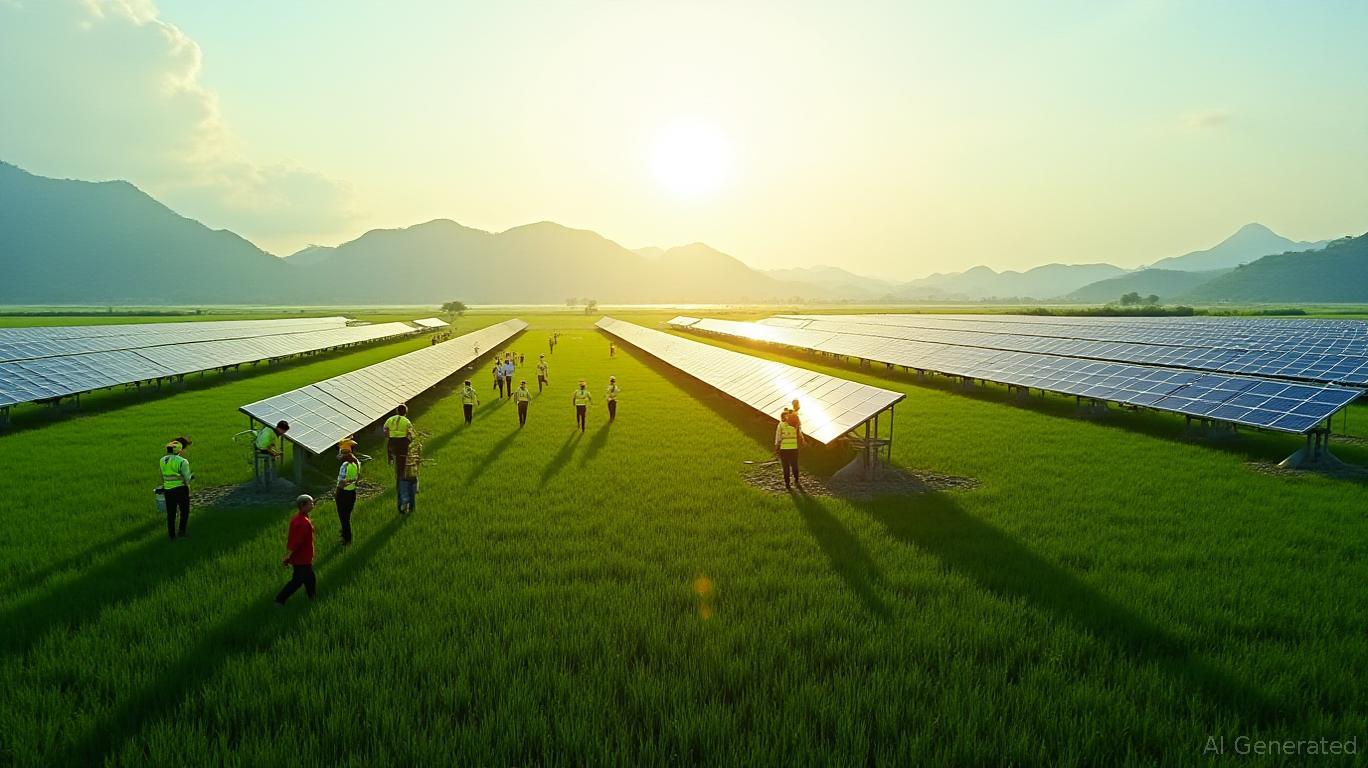Bridging the Gap: Why Sustainable Infrastructure in Emerging Markets is the Next Frontier for Risk-Adjusted Returns
The global economy is at a crossroads. Rapid urbanization, climate volatility, and digital transformation are reshaping demand for infrastructure, creating a $3.7 trillion funding gap by 2033—nearly half of which lies in developing regions like Southeast Asia and Sub-Saharan Africa. For investors seeking stable, long-term returns with a tangible societal impact, this is a call to action.
The Infrastructure Divide: A $100 Billion Opportunity in Southeast Asia
Southeast Asia's energy sector alone faces a $58 billion annual investment shortfall by 2025, with clean energy accounting for just 2% of global spending. This is a glaring opportunity. Renewable projects like Vietnam's solar farms and the Philippines' LNG terminals are already proving their mettle. Consider the

The data reveals a clear upward trajectory, with the index outperforming broader emerging markets by 12% since 2020. Investors like PIDG have pioneered blended finance models, such as structuring long-term bonds for Vietnam's AquaOne water project, which attracted $250 million from institutional investors. These deals balance risk and return by leveraging public guarantees and private capital, delivering stable yields of 8–10% annually.
Sub-Saharan Africa: Where Crisis Meets Catalyst
Sub-Saharan Africa's infrastructure deficit is even starker. The African Development Bank estimates a $130–$180 billion annual funding gap, with 41% tied to water/sanitation and 28% each to electricity and transport. The stakes are existential: inadequate electricity costs the region 5% of GDP annually, while 74% of roads remain unpaved. Yet, this is fertile ground for innovation.
Take the PowerGen Renewable Energy project in Nigeria and
, which aims to deploy 120 MW of solar and battery storage. Supported by DFIs like PIDG and Delphos, it exemplifies how private equity can fill gaps left by public budgets. Meanwhile, digital connectivity is a hidden gem. Africa's mobile broadband penetration is surging, but data costs remain prohibitive—1 GB of data consumes 18% of the average income. Projects like Kenya's fiber-optic backbone, financed by the World Bank and local operators, are slashing costs and unlocking SME growth.
Brookfield's 24% rise since 2020 mirrors investor confidence in Africa's logistics sector. Ports like Côte d'Ivoire's Abidjan, upgraded with $1.2 billion from the African Development Bank, now handle 7.5 million tons annually—a 40% increase since 2019.
Why Now? The Perfect Storm of Demand and Capital
Three trends converge to make this moment pivotal:
1. ESG-Driven Capital Floodgates: Institutional investors are prioritizing ESG-aligned assets. The Global Infrastructure Fund, backed by the G20, has committed $100 billion to climate-resilient projects, with 60% allocated to emerging markets.
2. Public-Private Partnerships (PPPs) as Catalysts: Structures like PIDG's “risk-layered” financing—where DFIs absorb upfront risks and private investors take equity stakes—have unlocked $4 billion in deals since 2020.
3. Geopolitical Realignment: The U.S. DFC's $22.8 billion Panama Canal port acquisition signals a shift toward strategic infrastructure investment. China's Belt and Road Initiative, despite concerns, has already funded $140 billion in African transport projects.
The Risk-Adjusted Case: Mitigating Volatility with Purpose
Critics cite risks: currency fluctuations, political instability, and operational hurdles. Yet structured investments mitigate these. For example:
- Currency Hedging: Projects in Sub-Saharan Africa often use local currency bonds, reducing forex exposure.
- Government Guarantees: PIDG's Vietnam water project included a sovereign-backed revenue stream.
- Diversification: A portfolio spanning energy, transport, and digital sectors reduces single-sector risk.
The payoff? A risk-adjusted return profile superior to bonds. A 2024 McKinsey analysis found that climate-resilient infrastructure in emerging markets delivers a Sharpe ratio (return per unit of risk) 1.5x that of global equities.
Conclusion: The Future is Built on Infrastructure
The $3.7 trillion gap is not a liability—it's a roadmap. Southeast Asia's clean energy transition and Sub-Saharan Africa's digital leapfrogging are not just economic imperatives but investment opportunities with multi-decade staying power. For portfolios seeking stability, growth, and ESG alignment, now is the time to act. As the World Bank warns, every dollar invested in infrastructure today generates $3 in long-term GDP growth. The question is: Will you be part of the solution, or left behind?
The numbers don't lie—they're rising. The time to bridge the gap is now.

Comments
No comments yet